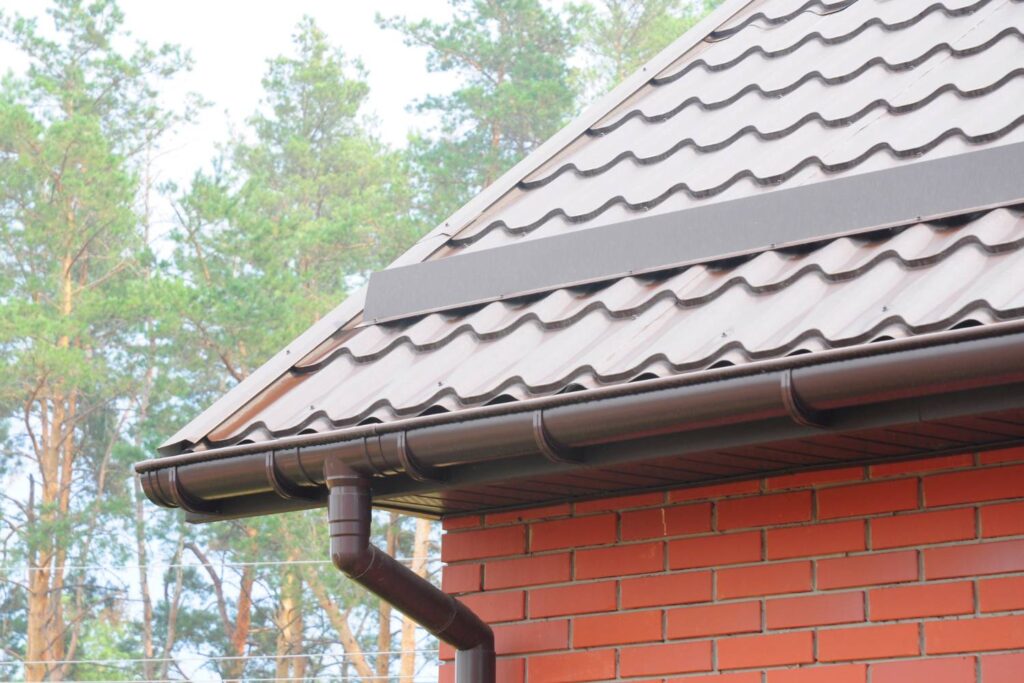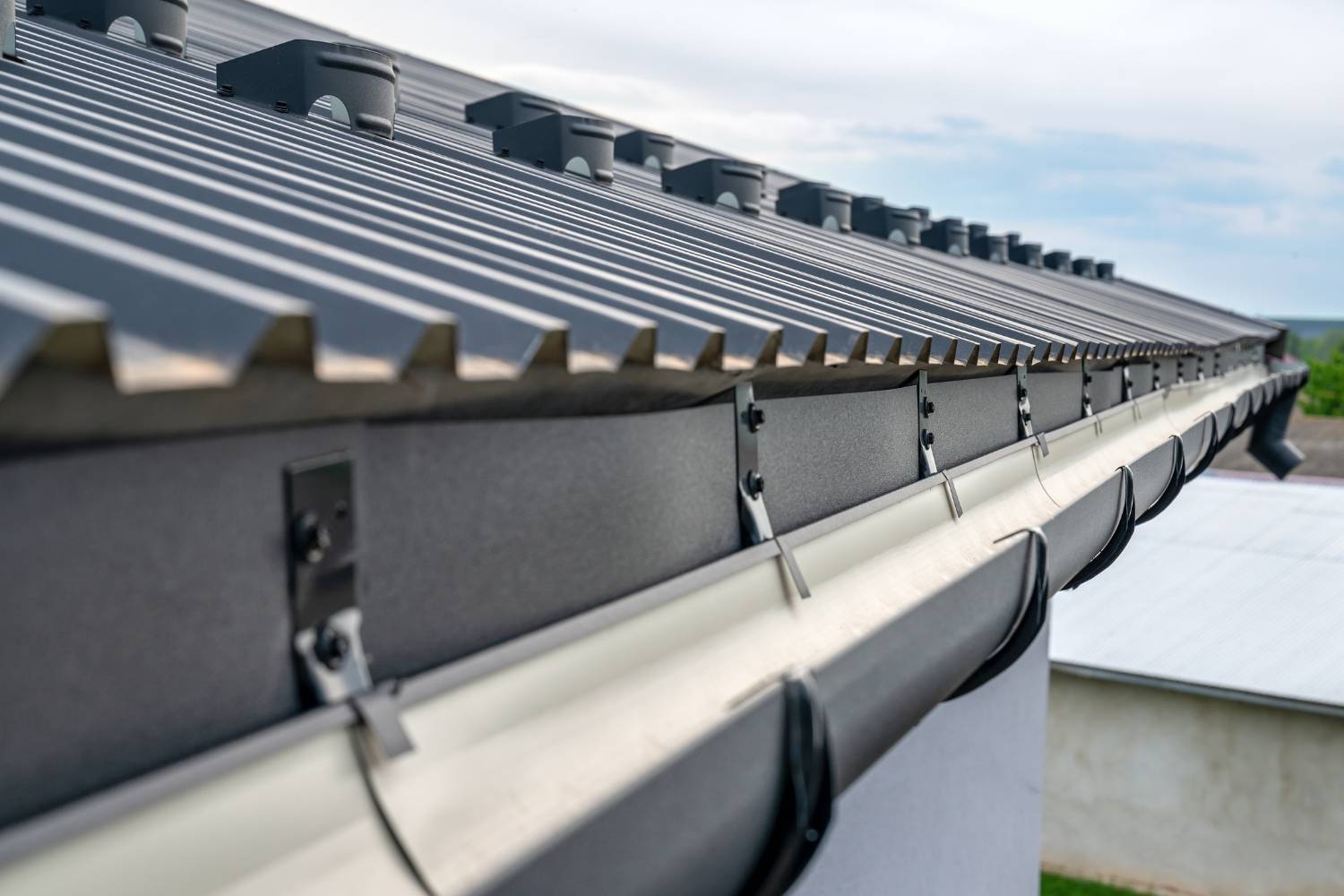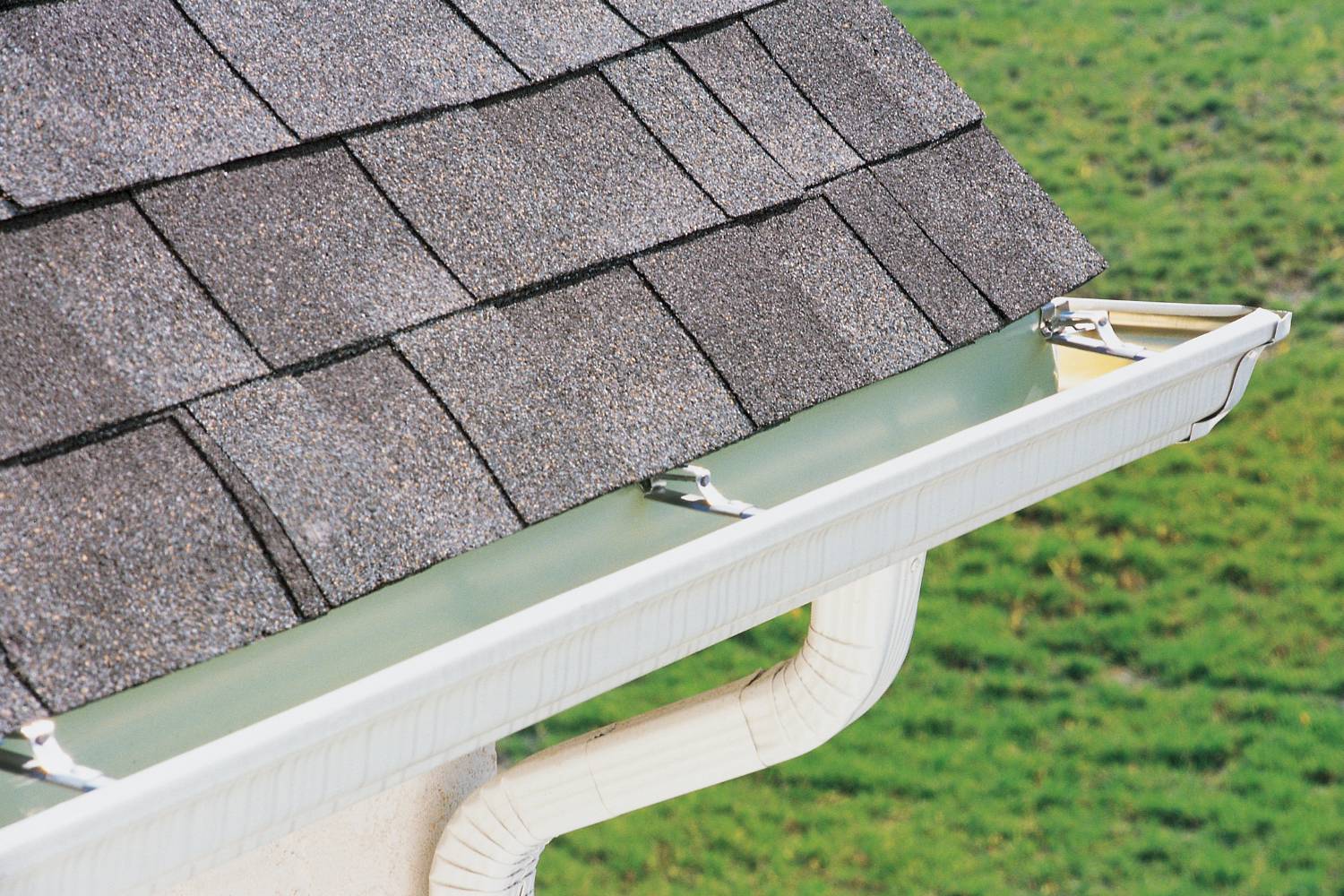Maintaining your gutters is crucial for protecting your home from water damage. Over time, gutters can show signs of wear and tear that, if ignored, can lead to significant structural issues. This blog will discuss the common causes of gutter damage, signs it's time to replace your gutters, and the importance of timely maintenance and replacement.
Regular inspection and maintenance can extend the life of your gutters and prevent costly repairs. If you notice any of the signs mentioned, it's essential to consult a professional for an evaluation. Investing in new gutters not only protects your home but also adds to its value. Proper care and professional help can save you from extensive repairs and ensure your home remains in excellent condition.
From visible damage and pest infestations to persistent clogs and high maintenance needs, recognising the signs that your gutters need replacement is key to preventing severe water damage. This blog covers everything from the causes of gutter damage and the importance of a well-functioning gutter system to detailed signs and solutions for various gutter problems. By the end, you'll understand why maintaining your gutters is essential for safeguarding your home.
Visible Damage and Wear
Regular inspection and maintenance can extend the life of your gutters and prevent costly repairs. If you notice any of the above signs, it's essential to consult a professional for an evaluation. Investing in new gutters not only protects your home but also adds to its value.
Regular maintenance and timely replacement of gutters are crucial for protecting your home from water damage. Visible signs of damage, persistent clogs, pest infestations, leaks, and high maintenance needs are clear indicators that it's time to replace your gutters. Proper care and professional help can save you from extensive repairs and ensure your home remains in excellent condition.
Maintaining your gutters is crucial for protecting your home from water damage. Over time, gutters can show signs of wear and tear that, if ignored, can lead to significant structural issues. This blog will discuss the common causes of gutter damage, signs it's time to replace your gutters, and the importance of timely maintenance and replacement.
Common Causes of Gutter Damage
- Back-flows: Improperly installed drip edge flashing can direct water back under the roof or behind the gutters, damaging the gutter troughs.
- Pest Infestation: Bees, wasps, and other pests can make their homes in the accumulated debris, clogging the gutters and causing damage.
- Ice Buildup in Winter: Snow and ice can lead to cracks and splits in gutters. Using salt in warm water can help mitigate this issue.
- Shortage of Pipes: Insufficient rainwater pipes can overload the drainage system, causing damage.
- Small Gutters: Installing gutters that are too small for your roof can lead to overflow and damage.
- Excessive Dirt and Leaves: Regular cleaning is essential to prevent clogging and subsequent damage.
Water Damage Around Your Home
Maintaining a well-functioning gutter system is essential to protect your home from water damage. Regular inspections, cleaning, and timely repairs can prevent costly damage to your home's foundation, roof, and interior. Investing in a quality gutter system and taking preventive measures can save you from significant headaches and expenses in the long run.
Water damage around your home can lead to costly repairs and severe structural issues if not addressed promptly. The most common culprit of such damage is often faulty or clogged gutters. This blog will explore the signs of water damage due to gutter issues, common causes, and the importance of maintaining an efficient gutter system to protect your home.
Signs Of Water Damage From Clogged Gutters
Attic problems, such as wet rafters and joists, cracks under roof joins, and damp insulation, can indicate water damage. Ceiling leaks may manifest as dark spots and ring-like stains or loose tiles. Discoloured walls, streaks and stains, peeling paint or wallpaper, and mould patches are also common signs.
Damp carpets, especially moisture near exterior walls, discoloured baseboards, and musty smells suggest water damage. Additionally, streaky window glass, damp sills and door frames, and humid basements with high humidity, efflorescence, and mould are telltale signs of water damage from clogged gutters.
Causes Of Leaking Gutters
Leaves and debris clogs obstruct rainwater flow, leading to overflow and foundation damage while promoting pest infestations like rodents, cockroaches, and termites. Cracks or gaps in gutters result in water overflow and damage; minor cracks can be sealed, but severe damage may require replacement.
Corrosion from constant exposure to harsh weather can deteriorate gutters over time. Loose fasteners can cause gutters to sag and leak, indicated by washed-out soil or standing water. Improper pitch prevents proper water flow, causing water collection and leakage.
Ways A Gutter System Protects Your Home
A gutter system protects your home by preventing rainwater from damaging the foundation and exterior walls, avoiding pressure buildup around the foundation. It stops water from seeping into basements, attics, and walls, preventing wood rot, fungus, and mould.
Gutters direct water away from the foundation and garden, helping even with watering and preventing overwatering. They also prevent water accumulation on the roof, stopping internal and external roof damage. Finally, a well-maintained gutter system avoids soil erosion and landscape flooding, ensuring even water distribution through irrigation.
Gutter Joint Separation
Gutter joint separation is a preventable issue that, if ignored, can lead to severe damage to your home's foundation, roof, and interior spaces. Regular maintenance, professional installation, and the use of high-quality materials are essential to keep your gutters functioning correctly and protect your home from water damage.
By addressing gutter joint separation promptly, you can avoid costly repairs and ensure the longevity and aesthetic appeal of your property. Gutter joint separation is a common issue that can lead to significant problems for your home if not addressed promptly. This blog explores the causes, consequences, and solutions for gutter joint separation, helping you understand why it happens and what you can do to prevent and fix it.
Causes Of Gutter Joint Separation
Debris buildup, such as leaves, twigs, and other debris, can accumulate in gutters, adding weight and causing the joints to separate. Regular cleaning is essential to prevent clogs that lead to water backups and increased pressure on the joints.
Poor installation, including incorrect slope, insufficient hangers, and inadequate fastening, can also lead to gutter separation. Professional installation ensures that gutters are correctly aligned and securely attached.
Thermal expansion and contraction, especially in plastic gutter materials, can cause joints to loosen over time. Ensuring proper installation techniques can help accommodate these changes and prevent separation. Over time, gutters, particularly those made of metal, can rust and weaken, leading to joint separation.
Regular inspection and maintenance can help identify and replace old or rusted sections before they cause problems. Additionally, excessive weight from heavy rain or snow can strain gutter joints, leading to separation. Proper gutter sizing and regular maintenance are crucial to handle heavy weather conditions.
Consequences Of Gutter Joint Separation
Foundation damage is a significant consequence of separated gutters, as they allow water to collect near the foundation, causing erosion, cracks, and structural instability. Effective gutter systems direct water away from the home, protecting the foundation.
Roof and siding damage can also occur due to water overflow from separated joints, leading to leaks, rot, and mould growth. Properly functioning gutters prevent water from reaching vulnerable parts of the house. Water pooling around the foundation can seep into basements and crawl spaces, causing dampness, mould, and mildew. Maintaining intact gutters helps keep these areas dry and safe.
Visible gutter separation detracts from the home's appearance and can reduce its value. Seamless and well-maintained gutters enhance curb appeal and protect your investment. Ignoring gutter joint separation can lead to more severe damage and costly repairs. Addressing gutter issues early reduces long-term maintenance expenses.
Solutions For Gutter Joint Separation
Regular inspection and maintenance are essential. Schedule bi-annual inspections to check for clogs, rust, and joint integrity, and clean gutters regularly to prevent debris buildup and ensure proper water flow. Professional installation and repairs are crucial. Hire experienced professionals for gutter installation and repairs to ensure they are done correctly.
Consider upgrading to seamless gutters, which have fewer joints and are less prone to separation. Use high-quality materials that are resistant to rust and can withstand temperature changes. Ensure all components, including hangers and fasteners, are durable and properly installed. Implement gutter protection systems, such as gutter guards or screens, to prevent debris from entering the gutters and causing clogs.
These systems reduce the frequency of cleaning and help maintain gutter function. Proper installation techniques are also important. Ensure gutters are installed with the correct slope to allow water to flow freely towards downspouts, and use the right type and number of hangers to provide adequate support and prevent sagging.
Frequent Blockages and Overflow
Frequent blockages and overflow in gutters can lead to serious damage to your home's foundation, walls, and landscaping. Regular maintenance, proper installation, and the use of gutter guards can prevent these issues and ensure your gutter system functions efficiently. By addressing problems early and investing in quality solutions, you can protect your home from water damage and prolong the lifespan of your gutters.
Gutters play a crucial role in protecting your home from water damage by directing rainwater away from your foundation. However, frequent blockages and overflow can compromise this system, leading to significant problems. This blog will explore the common causes of gutter blockages and overflow, the signs to look out for, and effective solutions to keep your gutter system functioning efficiently.
Common Causes Of Gutter Blockages And Overflow
Debris accumulation, such as leaves, twigs, and other debris, is the most common culprit for gutter blockages. When these materials build up, they can obstruct the flow of water, causing it to spill over the sides of the gutters.
Regular cleaning, especially in the fall and spring, can help prevent this issue. Improper gutter pitch can also cause problems. Gutters should have a slight downward slope toward the downspouts to ensure proper water flow. If the pitch is too flat or too steep, water can collect and overflow. Checking and adjusting the pitch can resolve this problem.
Insufficient gutters and downspouts can become overwhelmed during heavy rain, leading to overflow. Adding additional gutters and downspouts can help distribute the water more evenly. Narrow gutters may not handle heavy rainfall effectively, causing overflow. Upgrading to wider gutters can alleviate this issue. Cracks or damage in the gutters can lead to leaks and overflow. Regular inspections and timely repairs are essential to maintain gutter integrity.
Clogged downspouts can prevent water from draining properly, causing gutters to overflow. Ensuring downspouts are clear is crucial for the overall system to function correctly. In colder climates, ice dams can form in gutters, blocking water flow and causing overflow when the ice melts. Proper insulation and gutter maintenance can help prevent ice dams.
Signs Of Gutter Blockages And Overflow
Visible water overflowing from the gutters during rain indicates a blockage. Dark streaks or discolouration on walls can signal overflowing gutters. Water pooling near the base of your home is a clear sign that gutters are not directing water away properly.
Gutters that are pulling away from the house or appear saggy may be weighed down by debris or water. The presence of mould or mildew on exterior walls indicates prolonged moisture exposure from overflowing gutters. Soil erosion near the foundation or damaged plants can result from frequent gutter overflow.
Solutions To Prevent Gutter Blockages And Overflow
Regular cleaning and maintenance are crucial. Clean your gutters at least twice a year, more frequently if you have overhanging trees or live in an area with heavy rainfall. Use a leaf blower, garden trowel, or gutter scoop to remove debris. Installing gutter guards can prevent debris from entering the gutters while allowing water to flow freely. Consider high-quality options like aluminium mesh for long-lasting protection.
Ensuring proper pitch and tilt is important. Use a level to check the pitch of your gutters and adjust, if necessary, to maintain a slight slope towards the downspouts. Ensure the tilt is perpendicular to the roof for optimal water flow. If your current system is inadequate, install additional or wider gutters and downspouts to handle heavy rainfall.
Regularly inspect gutters for cracks, rust, or other damage and repair or replace as needed. Use a plumber's snake or high-pressure hose nozzle to clear blockages in downspouts. If you are unsure about the condition of your gutters or need a significant upgrade, hire a professional for inspection and installation.
Mould or Mildew in the Attic
Mould and mildew in the attic, often caused by gutter problems, can lead to serious health and structural issues. Regular gutter maintenance, proper ventilation, and timely repairs are crucial in preventing mould growth. If mould is already present, professional remediation is essential to ensure safe and thorough removal. By taking proactive measures, you can protect your home and health from the dangers of attic mould.
Mould and mildew in the attic can pose serious risks to both your health and the structural integrity of your home. This blog explores the causes of attic mould, the associated health risks, and effective solutions to prevent and remediate mould issues, especially those related to gutter problems.
Causes Of Attic Mould
Clogged gutters prevent proper water drainage, leading to water overflow. This excess water can seep into the attic, creating a damp environment ideal for mould growth. Regular cleaning and maintenance of gutters are essential to prevent blockages and subsequent water damage. Cracks or holes in gutters allow water to leak and infiltrate the attic. Over time, this water damage fosters mould growth. Inspecting and repairing gutters regularly helps avoid these issues.
Improperly sloped gutters fail to direct water away from the house, causing overflow and water intrusion into the attic. Ensuring proper gutter installation with the correct pitch is crucial for effective water drainage. Poor ventilation traps moisture, promoting mould growth. Proper airflow is necessary to keep the attic dry. Installing vents or fans can improve ventilation and reduce moisture buildup.
Health Risks Of Attic Mould
Exposure to mould spores can cause respiratory problems such as coughing, sneezing, and asthma attacks, especially in individuals with allergies or asthma. Mould in the attic can circulate throughout the home, affecting indoor air quality. Mould exposure can trigger allergic reactions, including itchy eyes, runny nose, and skin rashes.
Long-term exposure may lead to chronic conditions like sinusitis or bronchitis. Certain types of mould, such as Stachybotrys chartarum (black mould), produce mycotoxins that can cause severe health issues, including neurological problems and immune suppression. Immediate removal and remediation are necessary to mitigate these risks.
Solutions To Prevent And Remediate Attic Mould
Regular gutter maintenance is essential. Clean gutters at least twice a year, in spring and fall, to remove debris and prevent blockages. Consider installing gutter guards to minimise debris accumulation and reduce maintenance efforts. Inspect gutters for damage and repair any cracks, holes, or loose connections. Upgrade to high-quality, properly sloped gutters to ensure effective water drainage.
Improving attic ventilation is crucial. Install vents or fans to promote airflow and reduce moisture buildup in the attic. Ensure proper insulation to prevent condensation and maintain a dry environment. If mould is already present, hire a professional mould remediation specialist to assess and address the issue.
Specialists can identify the type of mould, locate hidden mould, and implement safe and effective removal techniques. Dehumidifiers should be used to keep attic humidity levels below 60%. Regularly check for signs of moisture or leaks and address them promptly.
Conclusion
Ensuring your gutters are in top condition is not just about aesthetics; it's about safeguarding your home from potentially severe water damage. From visible wear and tear to persistent blockages and pest infestations, recognising when your gutters need replacement is crucial for maintaining the integrity of your home. Regular inspections, timely maintenance, and professional evaluations can save you from costly repairs and preserve your home's value.
By addressing common issues such as gutter joint separation, frequent overflows, and mould growth in the attic, you can prevent further damage and ensure your gutter system functions efficiently. Investing in quality materials, proper installation, and protective measures like gutter guards can prolong the lifespan of your gutters and protect your home from water-related problems. Prioritising gutter health not only prevents immediate issues but also contributes to the long-term well-being of your property.
Frequently Asked Questions
Common signs include visible damage such as cracks or splits, frequent blockages and overflows, sagging gutters, persistent leaks, and evidence of pest infestations. Additionally, if you notice water damage around your home, such as stains on exterior walls, wet basements, or mould growth in the attic, it may indicate your gutters are failing and need replacement.
It's recommended to inspect your gutters at least twice a year, typically in the spring and fall. However, if you live in an area with heavy rainfall, overhanging trees, or frequent storms, more frequent inspections may be necessary to catch and address problems early.
Minor issues such as small cracks, loose fasteners, or minor blockages can often be repaired. However, if your gutters have extensive damage, significant wear and tear, or persistent problems that don't resolve with repairs, replacement may be the more cost-effective and long-lasting solution.
Delaying gutter replacement can lead to severe water damage to your home's foundation, roof, and interior. This can result in costly repairs, structural instability, mould growth, and reduced property value. Addressing gutter issues promptly can prevent these problems and protect your home.
Professionals can provide a thorough assessment of your gutter system, identifying both visible and hidden issues. They can recommend whether repair or replacement is necessary and ensure proper installation of new gutters. Professional installation helps prevent common problems like improper slope, poor fastening, and inadequate materials, ensuring your gutters function efficiently and last longer.


